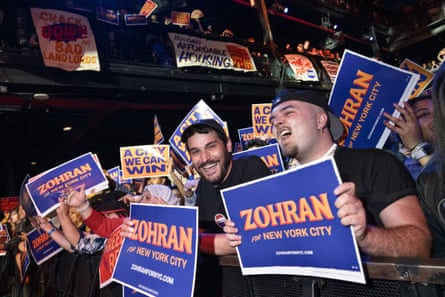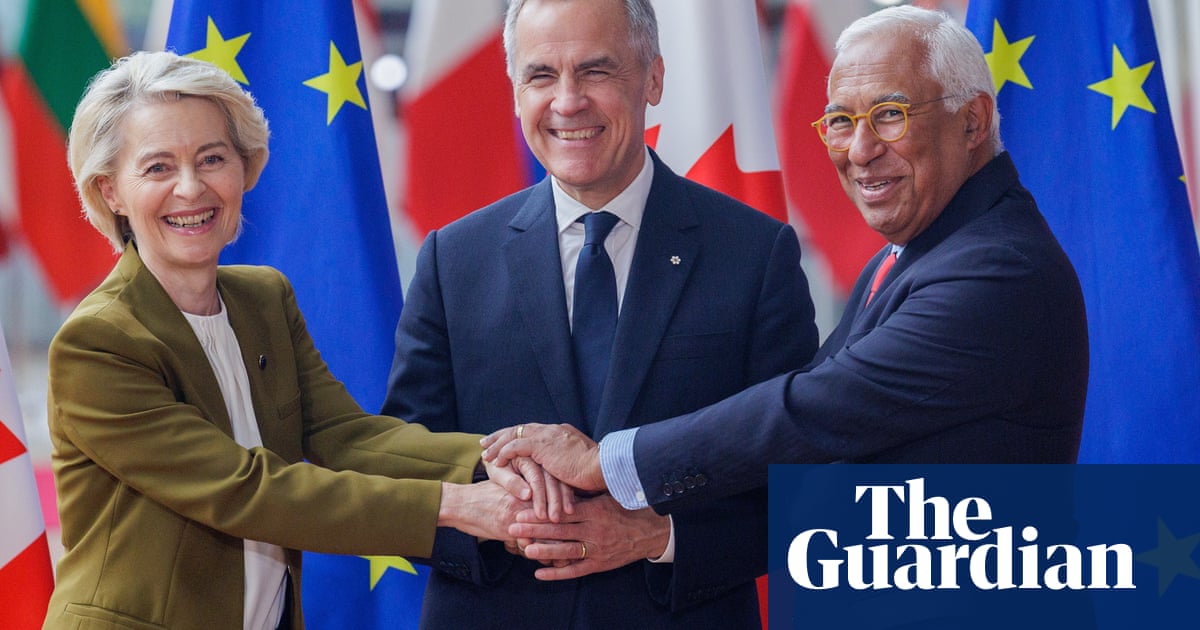The Zohran Mamdani phenomenon should not be happening, if received wisdom is a reliable predictor of events. He’s the 33-year-old Muslim leftist and Queens assemblyman running for the New York mayoralty with the support of the Democratic Socialists of America, and the vitriolic campaign against him suggests his momentum has caused panic in gilded circles. His chief opponent for the Democratic nomination, Andrew Cuomo, could not scream party establishment more loudly: he’s New York state’s former governor – just like his father was – and a former cabinet secretary. He married into that classic Democratic royalty, the Kennedys; his endorsements include the former president Bill Clinton; and billionaires such as Mike Bloomberg are pouring millions into his Super Pac.
In another age, someone like Mamdani would have been a no-hoper. What changed was the 2016 presidential campaign of the long-marginalised socialist senator Bernie Sanders, which re-energised the US left. But Donald Trump’s recent victory on a more extreme platform led to predictions of a general rightwing lurch in US politics, with progressive positions scapegoated for the Democratic loss (even though Kamala Harris ran on a squarely corporate, “centrist” ticket). I was scheduled to interview Mamdani on the night of the US presidential election, but his campaign asked to postpone as results started to come in suggesting a Trump victory was likely. Presumably, they wanted to reassess strategy in the coming US political winter.
But just a few months later, Mamdani is surging, and his campaign offers lessons for the western left in an age of chronic economic insecurity, rising far-right authoritarianism, war and genocide. The primary election vote is tomorrow, but a poll released during crucial early voting shows Mamdani overtaking Cuomo in “ranked choice” voting: it’s within the margin of error, but five months ago the insurgent candidate was polling only 1% support. In only a month, Mamdani has leapt from 22% to 32%, particularly powered by a 2:1 lead among the under-50s.
Yes, the millennial has been helped by Cuomo’s chronic liabilities – the former governor resigned in disgrace after an investigation by the state attorney general found that he had sexually harrassed several women – but rival candidates with bigger profiles and more political experience could have gained from that instead. The New York Times pleaded with readers not to rank Mamdani in the preferential voting system, rich New Yorkers are threatening to flee the city if he wins, he’s been attacked for inexperience, and smeared over his championing of Palestinian rights. “Zohran Mamdani is a public menace,” screeches rightwing magazine the National Review.
So what’s the universal lessons for the western left? Three Ms are key: messaging, medium and movement. Grace Mausser is the co-chair of New York City Democratic Socialists of America (DSA). When I suggested that Mamdani’s campaign would surely originally have been driven by revitalising the left, rather than the prospect of an actual election victory, she disagrees.
“When we started, we knew the path to victory was narrow,” she conceded. But, she emphasised: “We don’t run races for purely moral reasons or to make a point like the Green party in the US which has failed in their project.” Indeed, the DSA played a pivotal role in Alexandria Ocasio-Cortez’s shock defeat of another Democratic luminary, the former chair of the House Democratic Caucus Joe Crowley back in 2018. In turn, Ocasio-Cortez has bolstered Mamdani with her endorsement, underlining how progressive victories feed off one another.
“Super-clear messaging” is how Mausser sums up the Mamdani strategy. The early campaign settled on three main messages: “Fast and free buses, freeze the rents, free childcare. That’s so easy to remember. People know it, and it’s said over and over and over again.” Mamdani has other pledges, too – such as launching publicly run grocery stores – but key to his success are core, endlessly repeated commitments focused on a cost of living crisis triggered by a broken economic system.
This strategy is essential in combating a “culture war” designed to force leftists into a defensive posture. It doesn’t mean abandoning marginalised minorities – Mamdani has unequivocally committed to transgender rights, for example. It just means emphasising unifying economic messages. Anger is redirected from the disenfranchised to thriving economic elites, whom Mamdani seeks to tax to fulfil his pledges. The campaign has settled, too, on not backing down to bad faith attacks: Mamdani has not given an inch in his pro-Palestinian advocacy.

Then there’s the medium. What Mausser calls “high-quality video production” has been pivotal. Across the west, the far right has proven adept at using platforms such as TikTok to radicalise supporters, with the left mostly not even playing catch-up. Mamdani’s campaign made slick videos that are witty, sassy and snappy, communicating its messages to wide audiences. “All the conversations after the election [were] about needing a ‘Joe Rogan of the left’, how people aren’t getting their news from traditional media, how they’re getting their news from TikTok, Instagram and YouTube,” says Democratic strategist Waleed Shahid. “And that is exactly the story of Zohran.”
When Sanders endorsed Mamdani, he declared how he was “very impressed by the grassroots movement that he has put together”. Mamdani’s campaign has an army of door-knockers, often visiting districts traditionally ignored by Democratic machine politicians. For many of these canvassers, this is their first political experience. Mausser reports: “If you ask them, ‘How did you hear about Zohran?’, it’s like: ‘Oh, I saw his video on Instagram or TikTok.’” The message and the medium raised an army. There’s another factor, too: Mamdani, like Ocasio-Cortez, is charismatic and telegenic. It’s not fashionable to discuss this on a left which prioritises the collective over the individual, but we need compelling communicators who look the part.
Mamdani may not win the Democratic nomination. Even if he does, Cuomo will stand as an independent candidate, although the socialist challenger may do this, too. His campaign’s weaknesses reflect those of the wider US left: too little inroads among Black and older voters, as well as those with little online political engagement. But Mamdani’s against-the-odds success underlines why the far-right surge doesn’t have to weaken the left – far from it. Indeed, Mamdani positions himself as best-placed to resist Trump, rather than kowtow to his agenda. When the Republicans won, one of Mamdani’s first viral videos was visiting local districts where Trump enjoyed his biggest swings.
Whatever happens, Mamdani shows that the US left lives on after what Shahid calls “a shitty year”: along with Trump’s triumph, there have been dispiriting primary defeats of progressive representatives Jamaal Bowman and Cori Bush at the hands of notorious pro-Israel lobbyists Aipac. Mamdani has built a movement in New York, but his campaign has also given a shellshocked western left a gift: a strategy to take on the establishment even in adverse circumstances.
-
Owen Jones is a Guardian columnist
-
Do you have an opinion on the issues raised in this article? If you would like to submit a response of up to 300 words by email to be considered for publication in our letters section, please click here.

 German (DE)
German (DE)  English (US)
English (US)  Spanish (ES)
Spanish (ES)  French (FR)
French (FR)  Hindi (IN)
Hindi (IN)  Italian (IT)
Italian (IT)  Russian (RU)
Russian (RU)  5 hours ago
5 hours ago
























Comments